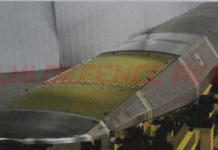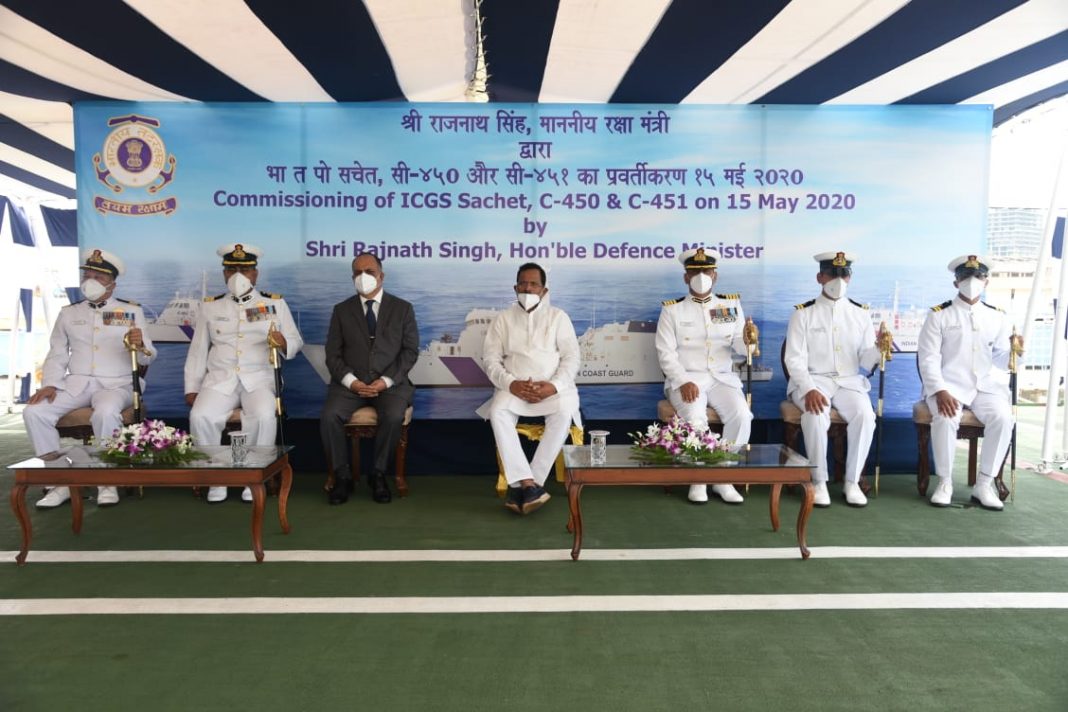The Indian Coast Guard (ICG) added the ICGS Sachet, an off-shore patrol vessel (OPV) to its 150-strong fleet in May 2020. The handover ceremony was presided over by Indian Defence Minister Rajnath Singh . Two interceptor boats, with pennant numbers IB C450 and IB C451 respectively, were also commissioned along with the ICGS Sachet during the ceremony. Interestingly, the homegrown ICGS Sachet is reflective of an ongoing move by the ICG to progressively induct vessels of indigenous design. As such, the ICGS Sachet has more than 70 percent indigenous content in terms of value, with only some propulsion and sensory equipment coming from abroad.

The Sachet, whose name means ‘alert’ in Sanskrit was built at the Goa Shipyard Limited (GSL) and was launched via a video link by the Defence Minister on account of various pandemic-related restrictions.
Here’s all you need to know about this OPV:
- The ICGS Sachet belongs to the Samarth-class of OPVs which were designed to boost the ICG’s capabilities after the 2008 terror attacks in Mumbai
- The ICGS Sachet is the first in a family of five such vessels that were ordered from GSL in 2016
- The keel was laid in March 2017, and the vessel was launched in Feb 2019, with the OPV being formally inducted into the ICG in 2020.
- The Sachet is 105 meters (345 ft) long, with a displacement of 2,350 tons
- The ship is designed to carry one Dhruv Advanced Light Helicopter (ALH) and some five high-speed boats
- Two fast rubber-hulled inflatable boats similar to the Palfinger Marine FRSQ 630 can also be carried.
- The ICGS Sachet is equipped with an Integrated Bridge System, Integrated Machinery Control System, Power Management System and a High Power External Fire Fighting System
- The class is well-suited for high-speed operations, search and rescue, law-enforcement, maritime patrol, and pollution control.
- Propulsion is via twin 9,100 kW engines and the vessel has an operational endurance of 6,000 nautical miles.
- The engines are built by MTU, Germany and feature controllable-pitch propellers
- The reduction gearbox used to drive the propeller shaft and other hydraulic equipment is made in India.
- Crew-centric equipment like hatches, plumbing, air filters and air-conditioning equipment has also been sourced from local suppliers
- The power unit-propeller configuration featured on the ICGS Sachet delivers excellent acceleration, handling and fuel efficiency because the pitch can be adjusted to extract maximum performance.
- The top speed is 23 knots, with a maximum endurance of 20 days
- The ICGS Sachet will be crewed by ten officers and 108 sailors.
- The first commanding officer will be Deputy Inspector General Rajesh Mittal, who has been deeply involved in producing what GSL calls the New Version 105 metre Advanced Offshore Patrol Vessel, which is basically the ICGS Sachet.
- The ICGS Sachet will be armed with one 30 mm CRN 91 Naval Gun and two 12.7 mm heavy machine guns (HMG) which can be remotely controlled — they are also called the 12.7 mm SRCG .
- The vessel can also be armed with the 76 mm Stabilised Remote Controlled Gun Mount (SRGM)
- The hull material is made out of special steel called ABS Grade ABD, which is the global standard for light patrol vessels all over the world.
- An ICG spokesperson during the induction ceremony said that the ships will be deployed extensively for coastal security, Exclusive Economic Zone Surveillance (EEZ), and other duties.
© Delhi Defence Review. Reproducing this content in full without permission is prohibited.
































